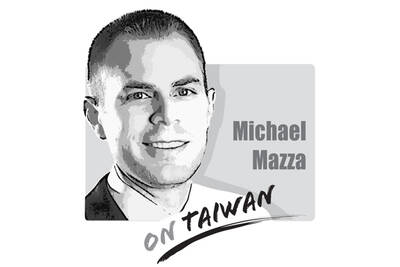Wednesday marked 72 years since Japan’s surrender was accepted in Taiwan. At the time, the Republic of China (ROC) was playing tricks and when Chen Yi (陳儀) handed Order No. 1 to General Rikichi Ando, Japan’s last governor-general of Taiwan, it had the text “Receiving the territory of Taiwan and the Penghu archipelago,” with the result that Ando did not sign the surrender document.
To this day, Ando’s surrender cannot be found in the ROC, although the acceptance of the surrender took place in Taiwan. This led to the lie that Taiwan and Penghu were handed over to the ROC through the Treaty of Taipei on April 28, 1952.
First, on Sept. 17, 1951, then-US ambassador to Taiwan Karl Ranking warned then-minister of foreign affairs George Yeh (葉公超) that the Treaty of Taipei could not imply that Taiwan became a de jure part of Chinese territory.
On May 13, 1952, the ROC’s Ministry of Foreign Affairs (MOFA) stated in Volume 54 addressing the peace treaty with Japan that “the San Francisco Peace Treaty only stipulates that Japan renounce sovereignty over Taiwan and Penghu, but does not specify to whom, and this cannot be remedied through the peace treaty with Japan.”
On July 16, 1952, a Central Daily News article said: “In accordance with the Cairo Declaration, we have received Taiwan and Penghu, where we are exercising executive power, and there is no doubt that Taiwan and Penghu are part of our territory. The Treaty of Peace between the Republic of China and Japan has been executed exactly in accordance with the San Francisco Peace Treaty, and on this matter, we have done all we can to add further stipulations, but in the end, we did not achieve our goals.”
On July 23, 1952, Dispatch No. 31 from the US embassy in Taiwan reported to the US Department of State that Yeh had said that due to the delicate international situation, Taiwan and Penghu “do not belong to us. In the current situation, Japan has no right to hand over Formosa and Penghu to us, nor can we accept such a transfer from Japan even if it so wishes.”
However, MOFA says that no such files exist.
On July 13, 1971, then-US Department of State legal adviser Robert Starr in a note to Office of Republic of China Affairs director Charles Sylvester confirmed the text in the previous point, “nor can we accept such a transfer from Japan even if it so wishes.”
Sim Kiantek is a former associate professor in the Department of Business Administration at National Chung Hsing University.
Translated by Perry Svensson
US President Donald Trump and Chinese President Xi Jinping (習近平) were born under the sign of Gemini. Geminis are known for their intelligence, creativity, adaptability and flexibility. It is unlikely, then, that the trade conflict between the US and China would escalate into a catastrophic collision. It is more probable that both sides would seek a way to de-escalate, paving the way for a Trump-Xi summit that allows the global economy some breathing room. Practically speaking, China and the US have vulnerabilities, and a prolonged trade war would be damaging for both. In the US, the electoral system means that public opinion
They did it again. For the whole world to see: an image of a Taiwan flag crushed by an industrial press, and the horrifying warning that “it’s closer than you think.” All with the seal of authenticity that only a reputable international media outlet can give. The Economist turned what looks like a pastiche of a poster for a grim horror movie into a truth everyone can digest, accept, and use to support exactly the opinion China wants you to have: It is over and done, Taiwan is doomed. Four years after inaccurately naming Taiwan the most dangerous place on
In their recent op-ed “Trump Should Rein In Taiwan” in Foreign Policy magazine, Christopher Chivvis and Stephen Wertheim argued that the US should pressure President William Lai (賴清德) to “tone it down” to de-escalate tensions in the Taiwan Strait — as if Taiwan’s words are more of a threat to peace than Beijing’s actions. It is an old argument dressed up in new concern: that Washington must rein in Taipei to avoid war. However, this narrative gets it backward. Taiwan is not the problem; China is. Calls for a so-called “grand bargain” with Beijing — where the US pressures Taiwan into concessions

Wherever one looks, the United States is ceding ground to China. From foreign aid to foreign trade, and from reorganizations to organizational guidance, the Trump administration has embarked on a stunning effort to hobble itself in grappling with what his own secretary of state calls “the most potent and dangerous near-peer adversary this nation has ever confronted.” The problems start at the Department of State. Secretary of State Marco Rubio has asserted that “it’s not normal for the world to simply have a unipolar power” and that the world has returned to multipolarity, with “multi-great powers in different parts of the